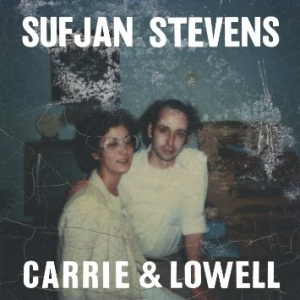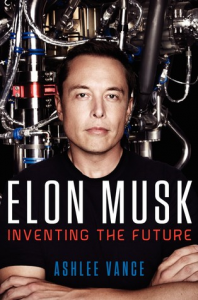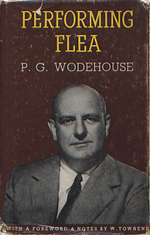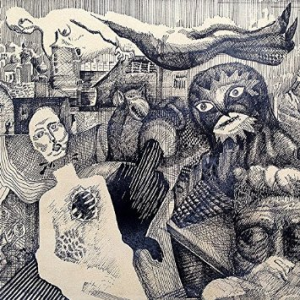This month I am studying “Baking Mastery – European cakes and tortes”
48 months part-time. 32nd month and 33rd month. Speeding it back up. I’m feeling more confident this month.
Somebody needs to think about this stuff...
by justin
This month I am studying “Baking Mastery – European cakes and tortes”
48 months part-time. 32nd month and 33rd month. Speeding it back up. I’m feeling more confident this month.
by justin
Today I read a paper titled “Human-Recognizable Robotic Gestures”
The abstract is:
For robots to be accommodated in human spaces and in humans daily activities, robots should be able to understand messages from the human conversation partner.
In the same light, humans must also understand the messages that are being communicated by robots, including the non-verbal ones.
We conducted a web-based video study wherein participants gave interpretations on the iconic gestures and emblems that were produced by an anthropomorphic robot.
Out of the 15 gestures presented, we found 6 robotic gestures that can be accurately recognized by the human observer.
These were nodding, clapping, hugging, expressing anger, walking, and flying.
We reviewed these gestures for their meaning from literatures in human and animal behavior.
We conclude by discussing the possible implications of these gestures for the design of social robots that are aimed to have engaging interactions with humans.
by justin

This week I am listening to “Carrie & Lowell” by Sufjan Stevens
by justin

From Bedrooms To Billions – The Amiga Years
Today I watched “From Bedrooms to Billions – The Amiga Years”
Just got done watching this documentary, and apart from the bad 80’s rock music celebrating a product, it was a fun run through my youthful memories and the changing games industry.
During those years Peter Molyneux was one of my game design heroes. Wish I had gotten the opportunity to work with him during that period.

Peter Molyneux
by justin
Today I read a paper titled “Weighted Unsupervised Learning for 3D Object Detection”
The abstract is:
This paper introduces a novel weighted unsupervised learning for object detection using an RGB-D camera.
This technique is feasible for detecting the moving objects in the noisy environments that are captured by an RGB-D camera.
The main contribution of this paper is a real-time algorithm for detecting each object using weighted clustering as a separate cluster.
In a preprocessing step, the algorithm calculates the pose 3D position X, Y, Z and RGB color of each data point and then it calculates each data point’s normal vector using the point’s neighbor.
After preprocessing, our algorithm calculates k-weights for each data point; each weight indicates membership.
Resulting in clustered objects of the scene.
by justin
Today I read a paper titled “Consciousness is Pattern Recognition”
The abstract is:
This is a proof of the strong AI hypothesis, i.e.
that machines can be conscious.
It is a phenomenological proof that pattern-recognition and subjective consciousness are the same activity in different terms.
Therefore, it proves that essential subjective processes of consciousness are computable, and identifies significant traits and requirements of a conscious system.
Since Husserl, many philosophers have accepted that consciousness consists of memories of logical connections between an ego and external objects.
These connections are called “intentions.” Pattern recognition systems are achievable technical artifacts.
The proof links this respected introspective philosophical theory of consciousness with technical art.
The proof therefore endorses the strong AI hypothesis and may therefore also enable a theoretically-grounded form of artificial intelligence called a “synthetic intentionality,” able to synthesize, generalize, select and repeat intentions.
If the pattern recognition is reflexive, able to operate on the set of intentions, and flexible, with several methods of synthesizing intentions, an SI may be a particularly strong form of AI.
Similarities and possible applications to several AI paradigms are discussed.
The article then addresses some problems: The proof’s limitations, reflexive cognition, Searles’ Chinese room, and how an SI could “understand” “meanings” and “be creative.” .
by justin
I have a small USB charging cable. Measures about two inches long. Lightning connector, Apple dock connector, mini USB, micro USB, USB-C.
I call it my “precious.”
“Why do you call it your precious?” asked the coffee shop acquaintance at the conference I am attending.
“Because it is such a small thing. And with it, the wielder can convey great power.” I said in my best Sean Bean accent.
“Ohmigod, you are *SUCH* a dork. You’re probably still single.” she responded.
A few hours later she walked up to where I was perched on a railing and chatting with another conference attendee, without formal introduction or pause she interjects “I need that charging cable for my iPhone.”
I turned slowly. “Sorry, I’m a dork. Remember?”
I am just so edgy some days.
The response, to maintain the professionalism of this website, is unprintable.
On another note, what kind of young lady goes out of her way to refer to a professionally attired businessman at a technology conference as a “dork?”
by justin
Today I finished reading “Stop Stealing Dreams” by Seth Godin
by justin
Today I finished reading “Email Marketing: Effective Email Marketing: The Ultimate Guide to Monetizing Your Email Marketing Strategy” by Sam A. Brown
by justin

This week I am listening to “Holding Hands With Jamie” by Girl Band
by justin
Today I finished reading “Bill Gates: The Life and Business Lessons of Bill Gates” by George Ilian
by justin
Today I read a paper titled “Unethical Research: How to Create a Malevolent Artificial Intelligence”
The abstract is:
Cybersecurity research involves publishing papers about malicious exploits as much as publishing information on how to design tools to protect cyber-infrastructure.
It is this information exchange between ethical hackers and security experts, which results in a well-balanced cyber-ecosystem.
In the blooming domain of AI Safety Engineering, hundreds of papers have been published on different proposals geared at the creation of a safe machine, yet nothing, to our knowledge, has been published on how to design a malevolent machine.
Availability of such information would be of great value particularly to computer scientists, mathematicians, and others who have an interest in AI safety, and who are attempting to avoid the spontaneous emergence or the deliberate creation of a dangerous AI, which can negatively affect human activities and in the worst case cause the complete obliteration of the human species.
This paper provides some general guidelines for the creation of a Malevolent Artificial Intelligence (MAI).
by justin
Today I finished reading “Blue Champagne” by John Varley
by justin
Today I finished reading “Dragons at Crumbling Castle: And Other Stories” by Terry Pratchett
by justin
Today I finished reading “Unemployable!” by David Thomas Roberts
by justin

This week I am listening to “Thank Your Lucky Stars” by Beach House
by justin
Today I finished reading “The Knight and Knave of Swords” by Fritz Leiber
by justin
Today I read a paper titled “Multi-modal Sensor Registration for Vehicle Perception via Deep Neural Networks”
The abstract is:
The ability to simultaneously leverage multiple modes of sensor information is critical for perception of an automated vehicle’s physical surroundings.
Spatio-temporal alignment of registration of the incoming information is often a prerequisite to analyzing the fused data.
The persistence and reliability of multi-modal registration is therefore the key to the stability of decision support systems ingesting the fused information.
LiDAR-video systems like on those many driverless cars are a common example of where keeping the LiDAR and video channels registered to common physical features is important.
We develop a deep learning method that takes multiple channels of heterogeneous data, to detect the misalignment of the LiDAR-video inputs.
A number of variations were tested on the Ford LiDAR-video driving test data set and will be discussed.
To the best of our knowledge the use of multi-modal deep convolutional neural networks for dynamic real-time LiDAR-video registration has not been presented.
by justin

Pandora In The Crimson Shell
Today I finished reading “Pandora in the Crimson Shell: Ghost Urn #1” by Masamune Shirow
by justin

Elon Musk – Inventing the Future
Today I finished reading “Elon Musk: Inventing the Future” by Ashlee Vance
by justin

This week I am listening to “Art Angels” by Grimes
by justin
A child doing perceived as dangerous activities outdoors?
Or a child swaddled in cotton wool, growing up in front of a TV?
I’d rather have a child with a few broken bones than an adult with a broken mind.
by justin
It’s National No Bra Day.
As I’ve always said, my favourite part of a woman begins with the letter “B” and ends with the letter “S.”
by justin
Today I read a paper titled “Motion model transitions in GPS-IMU sensor fusion for user tracking in augmented reality”
The abstract is:
Finding the position of the user is an important processing step for augmented reality (AR) applications.
This paper investigates the use of different motion models in order to choose the most suitable one, and eventually reduce the Kalman filter errors in sensor fusion for such applications where the accuracy of user tracking is crucial.
A Deterministic Finite Automaton (DFA) was employed using the innovation parameters of the filter.
Results show that the approach presented here reduces the filter error compared to a static model and prevents filter divergence.
The approach was tested on a simple AR game in order to justify the accuracy and performance of the algorithm.
by justin

Performing Flea
Today I finished reading “Performing Flea” by P.G. Wodehouse
by justin

This week I am listening to “Panda Bear Meets The Grim Reaper” by Panda Bear
by justin
This month I am studying “Baking Mastery – European cakes and tortes”
48 months part-time. 31st month. Taking it slow, not sure about the techniques.
by justin

This week I am listening to “Drones” by Muse
by justin

Pieces #1
Today I finished reading “Pieces 1: Premium Gallery” by Masamune Shirow
by justin
Today I read a paper titled “Formal Verification of Autonomous Vehicle Platooning”
The abstract is:
The coordination of multiple autonomous vehicles into convoys or platoons is expected on our highways in the near future.
However, before such platoons can be deployed, the new autonomous behaviors of the vehicles in these platoons must be certified.
An appropriate representation for vehicle platooning is as a multi-agent system in which each agent captures the “autonomous decisions” carried out by each vehicle.
In order to ensure that these autonomous decision-making agents in vehicle platoons never violate safety requirements, we use formal verification.
However, as the formal verification technique used to verify the agent code does not scale to the full system and as the global verification technique does not capture the essential verification of autonomous behavior, we use a combination of the two approaches.
This mixed strategy allows us to verify safety requirements not only of a model of the system, but of the actual agent code used to program the autonomous vehicles.
by justin
Today I read a paper titled “RFID Technology Based Attendance Management System”
The abstract is:
RFID is a nascent technology, deeply rooted by its early developments in using radar1 as a harbinger of adversary planes during World War II.
A plethora of industries have leveraged the benefits of RFID technology for enhancements in sectors like military, sports, security, airline, animal farms, healthcare and other areas.
Industry specific key applications of this technology include vehicle tracking, automated inventory management, animal monitoring, secure store checkouts, supply chain management, automatic payment, sport timing technologies, etc.
This paper introduces the distinctive components of RFID technology and focuses on its core competencies: scalability and security.
It will be then supplemented by a detailed synopsis of an investigation conducted to test the feasibility and practicality of RFID technology.
by justin
Today I read a paper titled “Faster Quantum Number Factoring via Circuit Synthesis”
The abstract is:
A major obstacle to implementing Shor’s quantum number-factoring algorithm is the large size of modular-exponentiation circuits.
We reduce this bottleneck by customizing reversible circuits for modular multiplication to individual runs of Shor’s algorithm.
Our circuit-synthesis procedure exploits spectral properties of multiplication operators and constructs optimized circuits from the traces of the execution of an appropriate GCD algorithm.
Empirically, gate counts are reduced by 4-5 times, and circuit latency is reduced by larger factors.
by justin
Today I read a paper titled “Autonomously Learning to Visually Detect Where Manipulation Will Succeed”
The abstract is:
Visual features can help predict if a manipulation behavior will succeed at a given location.
For example, the success of a behavior that flips light switches depends on the location of the switch.
Within this paper, we present methods that enable a mobile manipulator to autonomously learn a function that takes an RGB image and a registered 3D point cloud as input and returns a 3D location at which a manipulation behavior is likely to succeed.
Given a pair of manipulation behaviors that can change the state of the world between two sets (e.g., light switch up and light switch down), classifiers that detect when each behavior has been successful, and an initial hint as to where one of the behaviors will be successful, the robot autonomously trains a pair of support vector machine (SVM) classifiers by trying out the behaviors at locations in the world and observing the results.
When an image feature vector associated with a 3D location is provided as input to one of the SVMs, the SVM predicts if the associated manipulation behavior will be successful at the 3D location.
To evaluate our approach, we performed experiments with a PR2 robot from Willow Garage in a simulated home using behaviors that flip a light switch, push a rocker-type light switch, and operate a drawer.
By using active learning, the robot efficiently learned SVMs that enabled it to consistently succeed at these tasks.
After training, the robot also continued to learn in order to adapt in the event of failure.
by justin

Cocktail Time
Today I finished reading “Cocktail Time” by P.G. Wodehouse
by justin
Today I finished reading “Perfect Phrases for Documenting Employee Performance Problems” by Anne Bruce
by justin
Today I read a paper titled “Lift-off dynamics in a simple jumping robot”
The abstract is:
We study vertical jumping in a simple robot comprising an actuated mass-spring arrangement.
The actuator frequency and phase are systematically varied to find optimal performance.
Optimal jumps occur above and below (but not at) the robot’s resonant frequency $f_0$.
Two distinct jumping modes emerge: a simple jump which is optimal above $f_0$ is achievable with a squat maneuver, and a peculiar stutter jump which is optimal below $f_0$ is generated with a counter-movement.
A simple dynamical model reveals how optimal lift-off results from non-resonant transient dynamics.
by justin
Today I read a paper titled “Brain4Cars: Car That Knows Before You Do via Sensory-Fusion Deep Learning Architecture”
The abstract is:
Advanced Driver Assistance Systems (ADAS) have made driving safer over the last decade.
They prepare vehicles for unsafe road conditions and alert drivers if they perform a dangerous maneuver.
However, many accidents are unavoidable because by the time drivers are alerted, it is already too late.
Anticipating maneuvers beforehand can alert drivers before they perform the maneuver and also give ADAS more time to avoid or prepare for the danger.
In this work we propose a vehicular sensor-rich platform and learning algorithms for maneuver anticipation.
For this purpose we equip a car with cameras, Global Positioning System (GPS), and a computing device to capture the driving context from both inside and outside of the car.
In order to anticipate maneuvers, we propose a sensory-fusion deep learning architecture which jointly learns to anticipate and fuse multiple sensory streams.
Our architecture consists of Recurrent Neural Networks (RNNs) that use Long Short-Term Memory (LSTM) units to capture long temporal dependencies.
We propose a novel training procedure which allows the network to predict the future given only a partial temporal context.
We introduce a diverse data set with 1180 miles of natural freeway and city driving, and show that we can anticipate maneuvers 3.5 seconds before they occur in real-time with a precision and recall of 90.5\% and 87.4\% respectively.
by justin

This week I am listening to “Pale Horses” by mewithoutyou
by justin
Making use of mostly off-the-shelf components (I’m not proud) I built a new cat toy last week that keeps my cats entertained for hours.
I’ve had to add in code that limits how much time the cats can play with it for so that they don’t wear themselves out.
I have some ideas on how to improve the toy, mostly to do with vision recognition and feline detection.
The robot is a 3-axis arm controlled by servos and a simple driver circuit that plugs in to either a microcontroller or laptop.
Right now I am using a Microsoft Surface but will switch over to a Raspberry Pi 3 once I get the code working how I want it to.
by justin
Today I finished reading “Pearls Gets Sacrificed: A Pearls Before Swine Treasury” by Stephan Pastis
by justin
Today I read a paper titled “Mathematical Analysis of Multi-Agent Systems”
The abstract is:
We review existing approaches to mathematical modeling and analysis of multi-agent systems in which complex collective behavior arises out of local interactions between many simple agents.
Though the behavior of an individual agent can be considered to be stochastic and unpredictable, the collective behavior of such systems can have a simple probabilistic description.
We show that a class of mathematical models that describe the dynamics of collective behavior of multi-agent systems can be written down from the details of the individual agent controller.
The models are valid for Markov or memoryless agents, in which each agents future state depends only on its present state and not any of the past states.
We illustrate the approach by analyzing in detail applications from the robotics domain: collaboration and foraging in groups of robots.
by justin
I need to figure out how to get my Kinect to recognise and process the input from the paws of a feline.
To put this in context, my wife won’t let me re-purpose one of the huge touch screen computers we have as an interactive cat toy.
*grumble* *grumble* *grumble*
So now I need to see if there is any research that has been done on recognising touch input from a feline using the Microsoft Kinect and then figure out how to do that myself.
Life would be so much easier if my wife didn’t give me “that look” every time I wanted to experiment with my cats.
by justin
My cat (yes, my cat), has reached a point in her life where she thinks that all computer screens are now touch screens and can be appropriately interacted with.
She will paw at the screen and “ask for her game” and then wonder why it doesn’t respond how it does on the big, touch screen monitors she normally plays on.
Perhaps I am anthropomorphizing her reactions a bit.
But there is definitely a posture of confusion, possibly even disappointment, when trying to play her game.
My wife does this on a daily basis when she tries clicking on my Mac Book Pro’s screen.
by justin
Today I finished reading “Lord Emsworth Acts for the Best” by P.G. Wodehouse
by justin
The greatest gift you can give yourself is to live a life that is true to yourself rather than one that others expect of you.
by justin
Today I read a paper titled “Progressive Compression of 3D Objects with an Adaptive Quantization”
The abstract is:
This paper presents a new progressive compression method for triangular meshes.
This method, in fact, is based on a schema of irregular multi-resolution analysis and is centered on the optimization of the rate-distortion trade-off.
The quantization precision is adapted to each vertex during the encoding / decoding process to optimize the rate-distortion compromise.
The Optimization of the treated mesh geometry improves the approximation quality and the compression ratio at each level of resolution.
The experimental results show that the proposed algorithm gives competitive results compared to the previous works dealing with the rate-distortion compromise.
by justin

This week I am listening to “How Big, How Blue, How Beautiful” by Florence And The Machine
by justin
Today I read a paper titled “Intent expression using eye robot for mascot robot system”
The abstract is:
An intent expression system using eye robots is proposed for a mascot robot system from a viewpoint of humatronics.
The eye robot aims at providing a basic interface method for an information terminal robot system.
To achieve better understanding of the displayed information, the importance and the degree of certainty of the information should be communicated along with the main content.
The proposed intent expression system aims at conveying this additional information using the eye robot system.
Eye motions are represented as the states in a pleasure-arousal space model.
Changes in the model state are calculated by fuzzy inference according to the importance and degree of certainty of the displayed information.
These changes influence the arousal-sleep coordinates in the space that corresponds to levels of liveliness during communication.
The eye robot provides a basic interface for the mascot robot system that is easy to be understood as an information terminal for home environments in a humatronics society.
by justin
Today I finished reading “Irrationally yours : on missing socks, pick-up lines and other existential puzzles” by Dan Ariely
by justin
Today I read a paper titled “Real-time Automatic Emotion Recognition from Body Gestures”
The abstract is:
Although psychological research indicates that bodily expressions convey important affective information, to date research in emotion recognition focused mainly on facial expression or voice analysis.
In this paper we propose an approach to realtime automatic emotion recognition from body movements.
A set of postural, kinematic, and geometrical features are extracted from sequences 3D skeletons and fed to a multi-class SVM classifier.
The proposed method has been assessed on data acquired through two different systems: a professionalgrade optical motion capture system, and Microsoft Kinect.
The system has been assessed on a “six emotions” recognition problem, and using a leave-one-subject-out cross validation strategy, reached an overall recognition rate of 61.3% which is very close to the recognition rate of 61.9% obtained by human observers.
To provide further testing of the system, two games were developed, where one or two users have to interact to understand and express emotions with their body.